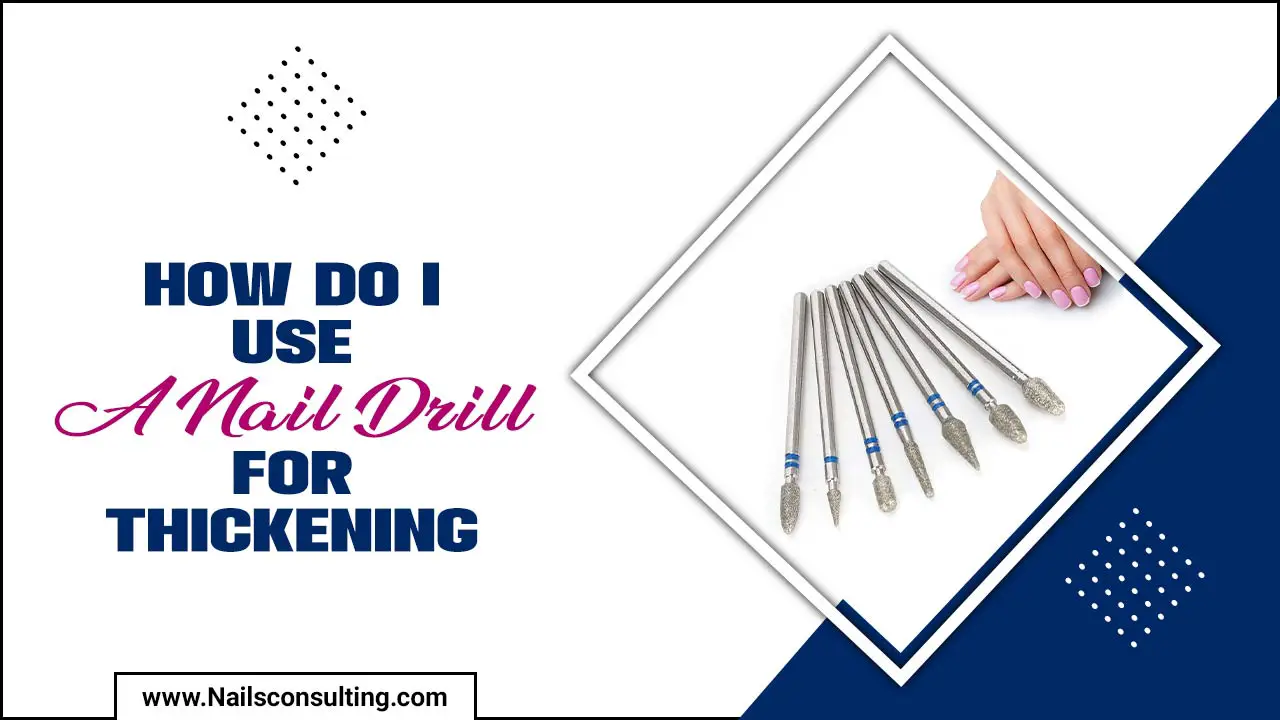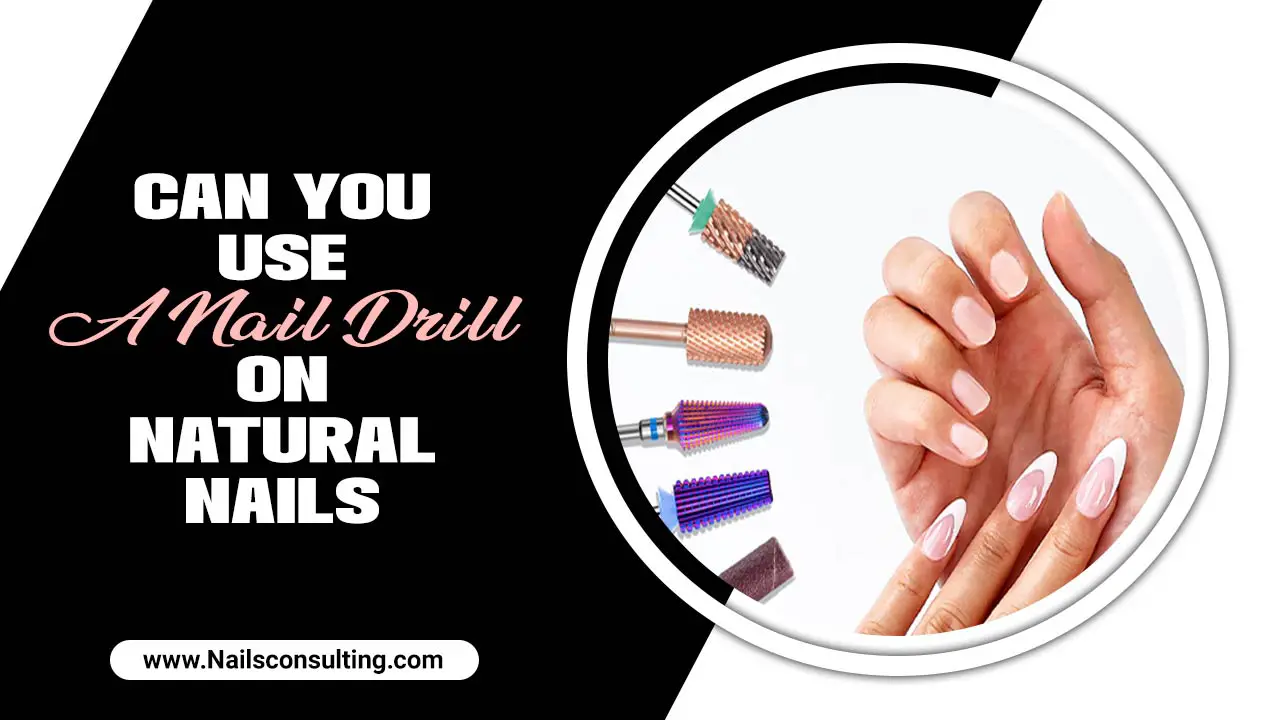A nail drill is essential for any at-home manicure or pedicure routine. While it is commonly used for shaping and smoothing nails, it also has a lesser-known purpose: removing dead skin.
Dead skin can build up around the edges of the nail bed and cuticles, leading to a rough and uneven appearance. This can not only affect the overall look of your nails, but it can also cause discomfort and lead to potential infections if left untreated.
Here, we will cover everything you need to know about using a nail drill for removing dead skin, from preparing your workspace and hands or feet to selecting the right nail drill bit. We will also discuss how do i use a nail drill for removing dead skin, the pros and cons of using a nail drill for dead skin removal, what happens if you don’t remove dead nail skin, how often you should remove it, and which nail bit is best suited for the job.
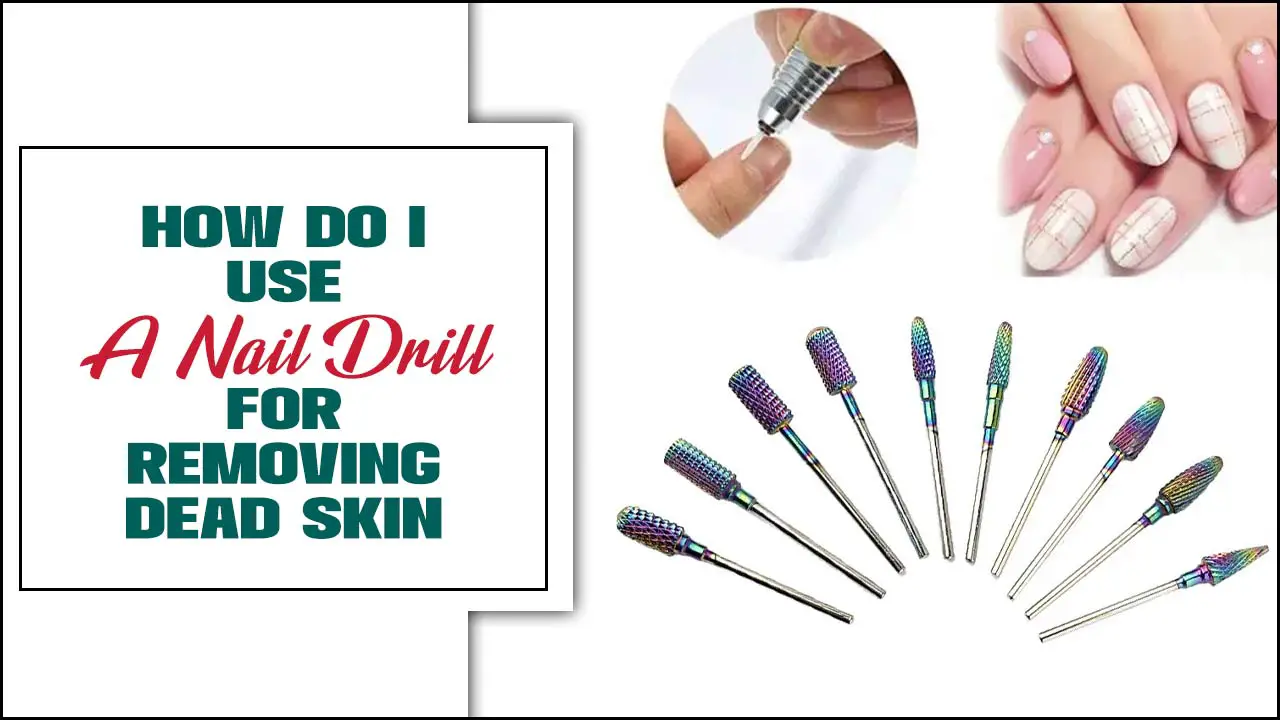
Should You Remove Dead Skin From Nails?
It is generally recommended to remove dead skin from nails for overall nail health and appearance. Dead skin around the nails can create a rough and uneven surface, making it difficult for nail polish to adhere properly. By gently removing dead skin, you can ensure a smooth and clean canvas for applying nail polish or other treatments.
Additionally, dead skin around the nails can harbour bacteria and fungus, leading to potential infections. Regularly removing dead skin helps maintain good hygiene and prevent these issues. However, it is important to be gentle when removing dead skin to avoid causing damage or irritation to the surrounding area.
How Do I Use A Nail Drill For Removing Dead Skin? – 5 Steps
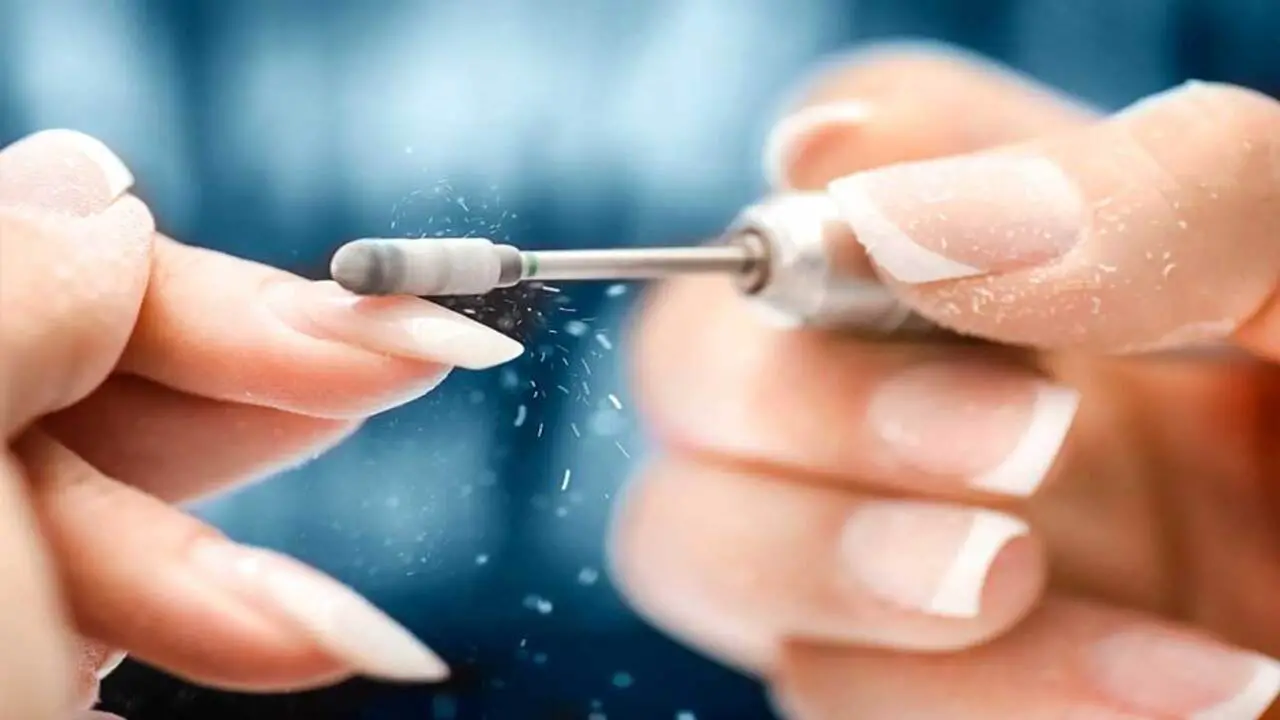
A nail drill to remove dead skin can achieve smooth and healthy-looking nails. Nail drills are an essential tool for removing acrylic or gel nails. They are designed to quickly and efficiently remove nail enhancements without causing damage to the natural nail bed. Nail drills work by using a rotating bit that gently files away the layers of the product, allowing for easy and precise removal.
Remember, practising caution when using a nail drill is important, especially if you are new to it. If you experience any pain, discomfort, or excessive bleeding, Here is a comprehensive guide on how do i use a nail drill for removing dead skin:
Selecting The Right Nail Drill Bit
Selecting the right nail drill bit is crucial for optimal results when removing dead skin with a nail drill. Consider the thickness and condition of the dead skin before choosing a bit. For delicate areas or sensitive skin, opt for a finer drill bit that will provide gentle exfoliation without causing any discomfort.
On the other hand, if you’re dealing with thicker or stubborn dead skin, a coarser drill bit will be more effective in removing it. Regardless of the type of bit you choose, ensure it is securely attached to the drill before use to ensure safety and precision. By selecting the right nail drill bit, you can effectively and efficiently remove dead skin without causing any damage to your nails or surrounding skin.
Preparing The Nail Drill And Workspace
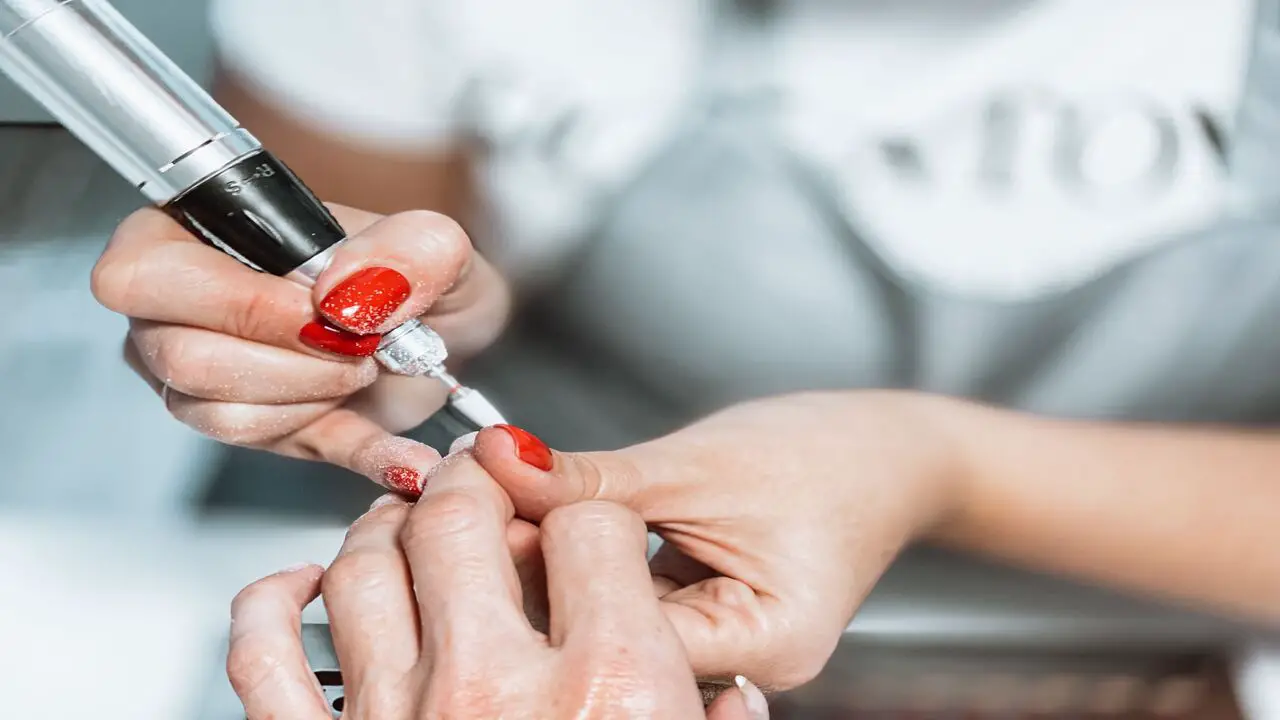
To ensure a hygienic experience, cleaning and sanitising the nail drill before use is important. This helps to prevent any potential infections or contamination. Having all the necessary tools and accessories within reach can streamline the workflow and save time.
It is recommended to arrange your workspace in a well-lit and comfortable area, allowing for better visibility and ease of movement. Keeping the nail drill plugged in and ready for use ensures you can start working without delays.
Preparing Your Hands Or Feet
Preparing your hands or feet is important before using a nail drill to remove dead skin. Start by soaking your hands or feet in warm water for 10 minutes to soften the skin. Add some Epsom salt or a few drops of essential oil for a relaxing experience.
Next, gently pat dry your hands or feet with a towel and use a cuticle pusher to push back the cuticles. This will expose more of the dead skin that needs to be removed. Finally, disinfect your nail drill and any other tools you will be using to ensure a clean and hygienic process.
Using The Nail Drill For Dead Skin Removal
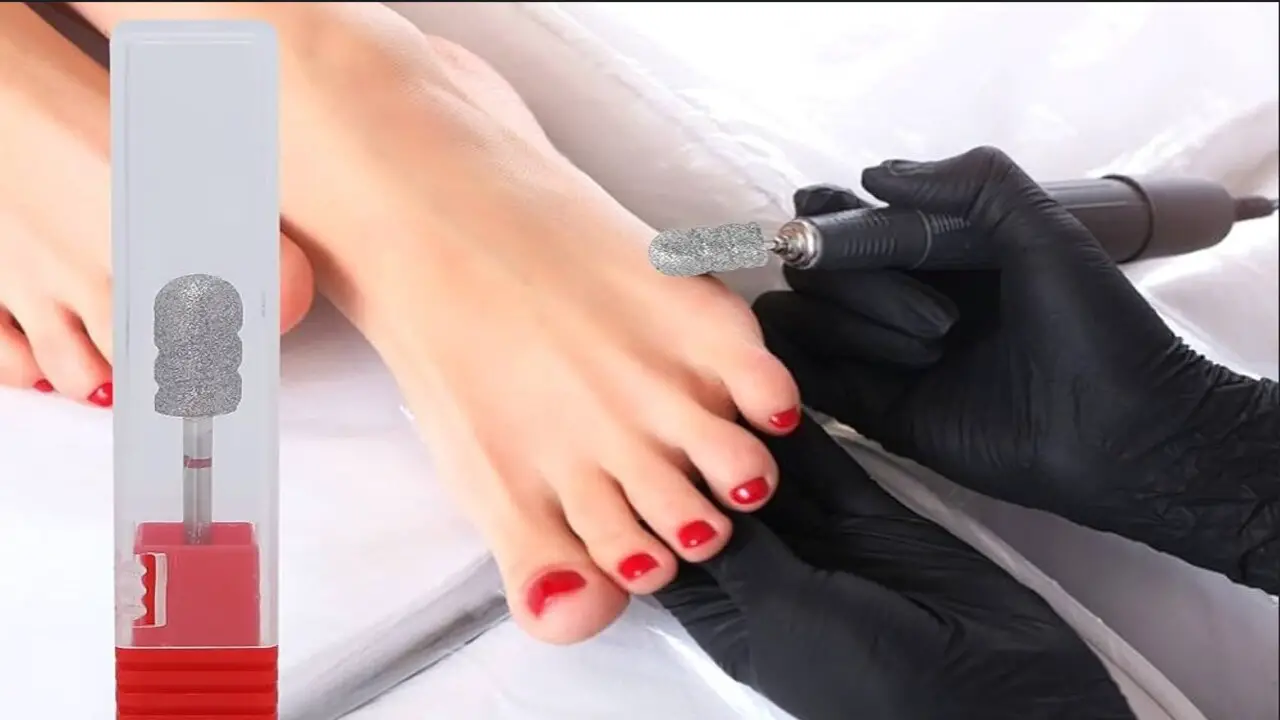
When using a nail drill for dead skin removal, it is important to hold the drill firmly and position it at a comfortable angle. To start, begin at a low speed to avoid unnecessary friction or discomfort on the skin. Gently guide the drill bit along the edges of the dead skin using a circular motion.
It’s crucial to be cautious and precise to prevent damage to the healthy skin surrounding the nails. You can gradually increase the speed and pressure as you become more comfortable. Remember, everyone’s skin is different, so adjust accordingly to your comfort level and the thickness of the dead skin.
Post-Procedure Care
After the dead skin has been removed, taking proper care of the treated area is essential. Start by cleaning the area with mild soap and warm water to ensure it is free from any debris or residue left behind during the dead skin removal process. This will help prevent any infections or irritations. Once the area is clean, apply a moisturizer or lotion to nourish and hydrate the skin.
This will help keep it moisturized and prevent dryness, which can lead to further skin issues. Avoid applying nail polish immediately after dead skin removal to allow the nails to breathe and recover. Finally, regularly moisturize and care for your nails to maintain health and appearance. Following these post-procedure care steps ensures your nails stay healthy and free from dead skin.
Pros And Cons Of Using Nail Drills For Dead Skin Removal
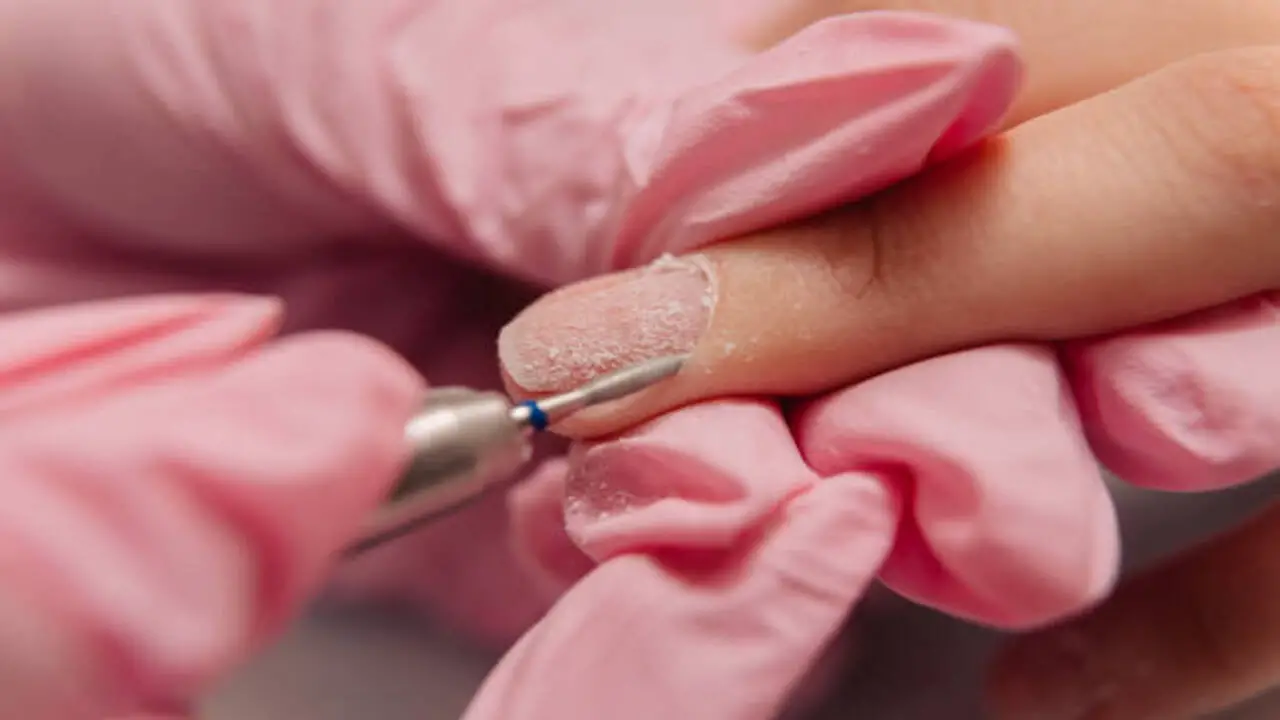
Using a nail drill for dead skin removal can be a convenient option, but it has pros and cons. It’s important to weigh these pros and cons and consider your comfort level and experience before deciding whether to use a nail drill for dead skin removal. Here are some of the advantages and disadvantages to consider:
Pros:
- Efficient: Nail drills can quickly and effectively remove dead skin, saving time and effort.
- Precision: The various drill bits allow precise targeting of specific areas, ensuring thorough exfoliation.
- Versatility: Nail drills can be used for more than dead skin removal. They can also be used for shaping nails and removing gel polish.
Cons:
- Risk of injury: Without proper training and caution, you risk injuring yourself or damaging your nails.
- Over-exfoliation: Using a nail drill too aggressively or frequently can lead to over-exfoliation, which can weaken the nails and cause sensitivity.
What Happens If You Don’t Remove Nail Dead Skin?
Not removing dead skin from your nails can lead to a buildup of debris and can make your nails look dull and unhealthy. Dead skin can also trap bacteria and fungi, leading to infections or nail diseases. Additionally, leaving dead skin on your nails can make it more difficult for nail products, such as polish or treatments, to adhere properly.
Using a nail drill to remove dead skin gently, you can improve the appearance and health of your nails and ensure that your nail products can work effectively. Use the nail drill cautiously and follow proper safety guidelines to avoid damaging your nails or causing injuries.
How Often Should I Remove Dead Skin?
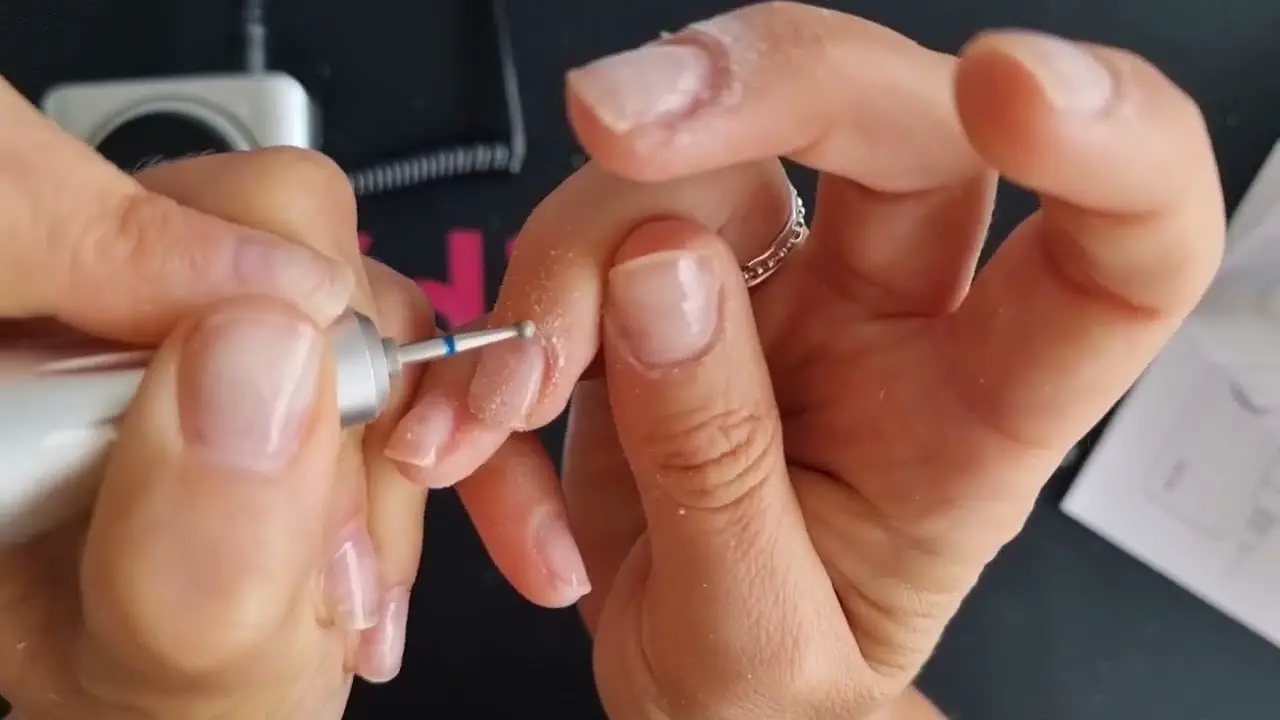
When using a nail drill to remove dead skin, it is important to consider how often you should perform this procedure. The frequency of dead skin removal will depend on your needs and preferences. Some people may find that removing dead skin once a week is sufficient, while others may need to do it more frequently.
Listening to your body and adjusting the frequency as needed is important. Overdoing it can lead to irritation and damage to the skin, so it is best to start with a conservative approach and gradually increase the frequency if necessary. Additionally, it is important to follow proper sterilization techniques when using a nail drill to prevent the spread of bacteria and infection.
What Nail Bit Removes Dead Skin?
When using a nail drill to remove dead skin, choosing the right nail bit for the job is important. The most effective nail bit for removing dead skin is a cone-shaped bit with medium grit. This type of bit allows for precise and controlled exfoliation, gently removing dead skin without causing damage or discomfort.
Using the nail drill at a low speed and applying minimal pressure when using the bit on the skin is important. Take your time and work in small sections, careful not to over-exfoliate or irritate the skin. Remember always to follow proper safety precautions when using a nail drill and consult a professional if you are unsure how to use it correctly.
Conclusion
Using a nail drill to remove dead skin can be effective and efficient. However, following the proper steps on how do i use a nail drill for removing dead skin and precautions is important to ensure safety and prevent damage to your nails or skin. Start by preparing your workspace and hands/feet and selecting the appropriate nail drill bit.
Use the nail drill gently and cautiously, focusing on the areas with dead skin. Afterwards, properly care for your nails and moisturize the treated area. While there are pros to using nail drills for dead skin removal, such as convenience and speed, there are also cons to consider, such as the risk of overdoing it and damaging your nails.
Frequently Asked Questions
1.How Do I Use A Nail Drill?
Ans: To use a nail drill, start by choosing the appropriate drill bit for the task at hand. Gently insert the bit into the drill, ensuring it is securely in place. Next, power on the drill at a low speed and gradually increase the speed as needed.
2.What Is The Best Tool For Removing Dead Skin From Feet?
Ans: The best tool for removing dead skin from feet is a foot file or a pumice stone. Before using any tool, it’s important to soak your feet in warm water. Avoid using sharp objects like razors to prevent injury and infection. Don’t forget to moisturize your feet afterwards to prevent dryness and cracking.
3.Can You Use A Nail Drill To Remove Calluses?
Ans: Yes, a nail drill can be used to remove calluses. You can gently buff away dead skin and calluses using a coarse grit sanding band. Remember to apply gentle pressure and avoid going too deep into the skin. Always sanitize your nail drill before and after use to prevent the spread of bacteria.
4.What Happens If You Don’t Remove Nail Dead Skin?
Ans: Neglecting to remove dead skin from your nails can have various consequences. It can lead to infections, make your nails look unattractive, and hinder their growth. Furthermore, the buildup of dead skin can cause pain and discomfort, especially if it becomes ingrown.
5.What Do Salons Use To Remove Dead Skin?
Ans: Salons use tools to remove dead skin, including nail drills with various attachments. They also use foot files and pumice stones for this purpose. The choice of tool depends on the type and thickness of the dead skin. Proper sanitation is crucial to prevent infections.

